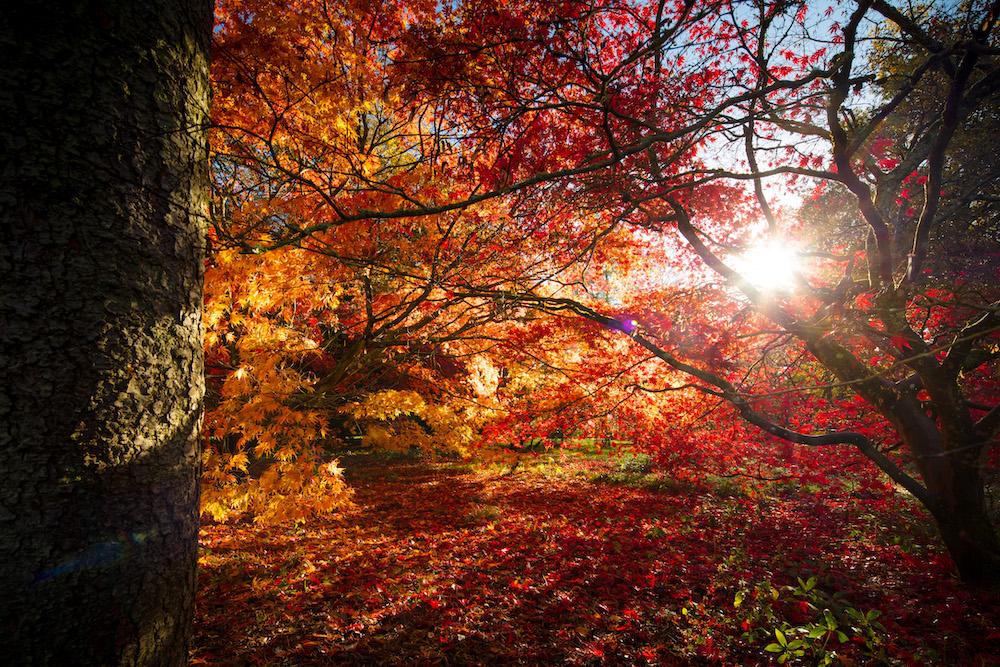It is officially autumn and it’s the time of year when we are dazzled by the kaleidoscope of colour and beauty of trees in our nation’s woodlands. But have you ever wondered why they change colours? Forestry England explains.
For trees to grow, they need sunlight, nutrients, and water. The nutrients and water come from the soil. The sunlight is captured by the leaves.
In spring and summer, to capture the sunlight, the leaves use a chemical called chlorophyll, which is what makes leaves green. Chlorophyll turns sunlight into food, which the trees need to grow, through a process called photosynthesis. The food they make is sugar, which they use to grow new leaves, flowers and seeds.
As well as chlorophyll (greens), leaves contain two different types of pigment. Carotenoids (oranges), xanthophylls (yellows) and most of the year these colours are masked by great amounts of green colouring.
As autumn arrives the days get shorter, it gets colder and there is less sunshine. Trees realise that winter is about to begin, they start breaking down the chlorophyll (green) that is stored in the leaves to get the nutrients out. This allows trees to store all the nutrients from their leaves in their roots, which are protected from the cold during the winter months.
As the plants break down the chlorophyll, the green colour disappears from their leaves. What is left behind are other pigments which you normally cannot see, the carotenoids and xanthophylls. Depending on which pigments are found in the leaf, they can turn different shades of yellow or orange or even red.
Anthocyanins (reds) forms when there is a concentration of sugar in the sap. The more sunlight a leaf is exposed to, the more sugar is produced; the more sugars that accumulate in the leaf, the more anthocyanins are produced, and the redder the leaf becomes.
The weather plays a big part in how long the magical autumn colour will last. Heavy wind or rain can cause the leaves to fall before they fully develop colour and frost can weaken the vibrant colours. If we experience an early frost, it can cause the leaves to fall off before they’ve even turned colours. The best weather for brilliant autumn colour is a growing season with ample moisture followed by a dry, cool and sunny autumn.
We expect autumn to become even more colourful as we increase the resilience of the nation’s forests in the fight against climate. Forestry England is planting lots of different species of trees, with seeds from different climates, which should fare well in the conditions predicted over the next decades. Sycamore, wild cherry, hornbeam, small-leaved lime, and oak to name a few should bring a riot of colour to our countryside for visitors to enjoy well into the future.

CORONAVIRUS NOTICE
Coronavirus advice is being updated regularly, please enjoy browsing our site for What’s On and check event details directly with venues and event organisers before booking and setting out.
Stay safe.
